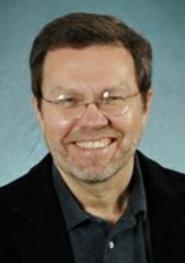
Aptly echoing the thoughts of many Americans who awoke to discover that Sept.17 was a national holiday, Michael Lienesch began his Constitution Day lecture with a simple question, “so what is Constitution Day anyway?” As Lienesch, professor of political science at the University of North Carolina at Chapel Hill, would delineate in his speech, to answer this seemingly simple question, one must first understand where this holiday came from, and why it was created, and how it is celebrated today.
Though Constitution Day as we know it today became an official holiday in 2004, the true origins of the holiday stretch as far back as Hamilton’s own Elihu Root (Class of 1864). Root, along with a group of other prominent politicians, lawyers and business people united over worries of the American Constitution after World War I. This group, concerned with the progress of their country following the war, decided to create a national movement, as Lienesch described, “To build patriotism, respect for law and order, [and] protect the Constitution.” To do this, they decided to give the Constitution its own day to be celebrated, September 17.
This was the birth of Constitution Day, celebrated with “parades, concerts, patriotic pageants, [and] public readings of the Constitution.” So popular was this holiday, said Lienesch, that it was actually turned into “Constitution Week.” Not satisfied with that, Constitution Day supporters “went into state legislatures, requiring schools to teach courses on the Constitution,” a practice that is still observed today. Lienesch emphasized that all this was meant not only to learn about the constitution, but also “to learn to respect and revere the constitution like a sacred document to be cherished and protected, and above all, not to be changed.”
Despite the holiday’s initial success, the movement quickly encountered some problems. One such issue was the support of extremist groups, such as the KKK, who frequently took over celebrations claiming to be the biggest supporters of the Constitution. This led to criticism from many liberals, and became the source of political conflicts over which both sides would claim that the Constitution supported their side. Support dropped even further as the Great Depression hit, “and the crowds began to fall off and cities and towns didn’t have the money to put on parades.” The celebrations did continue, though now funded solely by groups against the New Deal and Theodore Roosevelt, eventually leading to the Republican National Convention completely sponsoring the holiday across the country. Lienesch explained that “Constitution Day became tied to the Republican Party… [as] a holiday only for them.”
With the onset of World War II, Constitution Day almost completed died out. On Sept. 17, 1955, the Senate held a hearing on the Constitution where notable figures such as Roy Wilkins of the NAACP and Reverend Eugene Carson Blake testified that many people’s constitutional rights had been violated, from black Americans in the south to citizens persecuted during the McCarthy era communist investigations. Representatives of businesses, workers, and farmers all claimed their rights had also been infringed upon, clearly demonstrating that Americans now viewed the constitution primarily as their source of rights, and cared most about the Bill of Rights.
As Lienesch explained, “how we celebrate shows how we think of the Constitution,” and the lack of support for the holiday has only continued since the 1950s. As of 2004, when the law officially establishing Constitution Day as a recognized holiday was passed, all federally funded institutions are required to, as he described, “do something, or anything” to celebrate the Constitution on September 17. However, there is no regulation on what these institutions, namely schools, are doing to celebrate. This often leads to trivial practices like watching the movie National Treasure, which, Lienesch pointed out, is a fictional movie about “finding the Declaration of Independence, not the Constitution.”
Lienesch contended that these current celebrations are indicative of how Americans regard the Constitution. Referring to numerous polls, Lienesch stressed that “people don’t know much about [the constitution] other than that it is important to their lives,” reflecting both an apathetic view toward the document, and a failure in educating citizens about it...
So, asked Lienesch, “what are we doing wrong?” According to Lienesch, the way we look at and teach the Constitution, as “a perfect document not to be changed” is actually counterproductive, and that Americans must accept that it is an “imperfect document created by humans who were not larger than life.” As Americans, asserted Lienesch, we need to look critically at the Constitution and understand the times that it has failed, and that it was never intended to stay in the same form for all of history, which is precisely why the framers allowed room for amendments.
Lienesch concluded with the story of Gregory Watson, a college student whose research for a political science class led him to catalyze the movement to ratify the 27th amendment to the Constitution, to illuminate his views on how we should all view and celebrate the Constitution.
In concluding, Lienesch urged, “Let’s celebrate the Constitution by being a little bit more like the people who wrote it. Seeing the problems with their current political institutions, and instead of complaining or being apathetic, they did something to fix it.”
